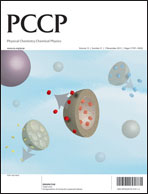Electrical impact of MoSe2 on CIGS thin-film solar cells
Abstract
The CIGS solar cell is one of the most promising photovoltaic devices due to the achievement of the highest conversion efficiency (>20%) among all thin-film solar cells. The CIGS cell has a glass/Mo/CIGS/CdS/TCO configuration, and the CIGS–Mo interface is a Schottky barrier to holes. During the sulfurization-after-selenization (SAS) CIGS formation process with H2Se gas, the Mo surface transforms naturally into MoSe2 at the CIGS–Mo interface. In this work, the electrical impact of MoSe2 on CIGS solar cells was investigated. Different CIGS–Mo interfaces were prepared with two CIGS processes. One is SAS, and the other is the sequential-sputtering–selenization CIGS process with Se gas. Formation of MoSe2 is hardly observed in the latter process. Samples were characterized by XRD, the van der Pauw method, reflectance, and visual inspection. Besides, Schottky barrier heights of cells were extracted from J–V–T measurements. For the first time, it was experimentally shown that the existence of thin MoSe2 film can decrease the apparent Schottky barrier height of CIGS solar cells. In addition, 1-dimensional numerical simulation showed that a larger barrier height affects both the fill factor and open-circuit voltage. Therefore, the formation of MoSe2 during the CIGS process should minimize the negative effect of Schottky barrier on solar-cell performances, especially with large Schottky barrier.


 Please wait while we load your content...
Please wait while we load your content...